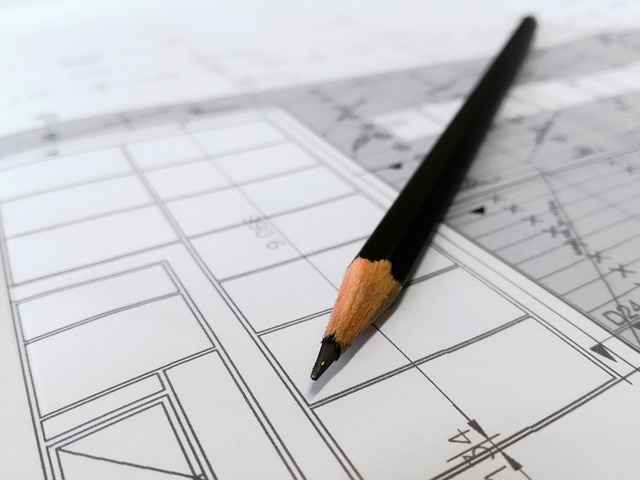Building your first home is an exciting and monumental step, filled with the potential to create a space uniquely suited to your lifestyle. However, the process can be challenging, with numerous factors to consider, from budgeting to design to choosing reliable contractors. Here’s a guide designed to simplify the journey, offering essential tips to make your first home-building experience smooth, well-informed, and rewarding.
1. Set a Realistic Budget
One of the most crucial steps in home building is establishing a comprehensive and realistic budget.
Tips for setting a budget:
- Include a contingency fund: Set aside at least 10-15% of your budget for unexpected costs.
- Prioritize essentials: Focus on structural necessities, such as quality insulation or durable foundations, before splurging on luxury finishes.
- Get multiple quotes: Collect quotes from at least three contractors to ensure you’re getting a fair price.
2. Choose the Right Location
The location of your home will significantly impact your quality of life and the property’s long-term value. Research different neighborhoods to find one that aligns with your lifestyle and meets your priorities, like school districts, proximity to work, and community amenities.
Factors to Consider:
- Accessibility and commute times: Consider your daily travel needs and access to essential services.
- Future development plans: Look into local development plans or zoning regulations, as they can influence property value and neighborhood character.
- Environmental considerations: Evaluate any potential natural hazards (like flood zones) and plan for suitable design adaptations.

3. Plan Your Layout Thoughtfully
A well-planned layout is essential to maximizing comfort and functionality. Take the time to consider how you’ll use each room, how you want spaces to flow, and any future family or lifestyle changes that might impact the space.
Layout Planning Tips:
- Think about traffic flow: Arrange spaces to avoid unnecessary walking between rooms, especially in high-traffic areas like the kitchen and living room.
- Prioritize natural light: Orient key rooms (like the living room and bedrooms) to maximize natural light, which enhances aesthetics and saves on energy costs.
- Consider flexibility: Design rooms that can adapt to future needs, like a home office that could later become a guest room.
4. Invest in Quality Materials and Workmanship
Durability and longevity should be top priorities when selecting materials and contractors. Although budget-friendly options may seem appealing, investing in quality materials and skilled labor pays off by reducing maintenance and replacement costs.
Choosing Quality Materials:
- Opt for energy-efficient options: From windows to insulation, energy-efficient materials lower utility bills and increase home value.
- Select durable materials for high-use areas: Consider durable options like quartz countertops or hardwood floors, which withstand wear better over time.
- Vet contractors carefully: Choose builders and subcontractors with a reputation for quality work and verify their licenses, reviews, and previous projects.
5. Understand Permits and Regulations
Every city and county has building codes and regulations, so it’s crucial to familiarize yourself with local requirements and obtain the necessary permits.
Tips for Navigating Permits:
- Check with local authorities early: Visit your local planning department to understand the specific permits and requirements in your area.
- Follow code regulations carefully: Building to code prevents costly adjustments later on and ensures that your home meets safety standards.
- Consider a project manager: Hiring a project manager can help you stay on track with permits, inspections, and regulatory details.
6. Incorporate Sustainable Design Elements
Sustainable design is not only environmentally friendly but can also reduce long-term costs. From energy-efficient appliances to smart home technology, there are several ways to make your home greener and future-proof.
Eco-Friendly Ideas:
- Invest in solar panels: If feasible, solar panels can significantly lower energy costs and often come with government incentives.
- Install energy-efficient windows and insulation: Proper insulation and double-glazed windows improve energy efficiency, keeping your home warm in winter and cool in summer.
- Consider sustainable landscaping: Use native plants that require minimal water and choose permeable paving materials to support drainage.
7. Choose Finishes with Care
Choosing finishes—like countertops, flooring, and fixtures—often feels like the most exciting part of the process, but it’s essential to balance aesthetics with durability and maintenance requirements. Select finishes that align with your design style and lifestyle to create a cohesive and lasting aesthetic.
Finish Selection Tips:
- Stick to a design theme: A consistent style helps create a sense of unity throughout the home.
- Choose low-maintenance options: Materials like quartz countertops or ceramic tiles are easier to clean and maintain than others.
- Don’t overlook lighting: Incorporate a mix of ambient, task, and accent lighting to enhance functionality and visual appeal.
8. Plan for Landscaping and Outdoor Space
A well-designed outdoor space can increase your home’s appeal and provide extra living space. Consider landscaping as an integral part of the building process rather than an afterthought.
Outdoor Space Tips:
- Create multi-functional areas: Designate spaces for dining, gardening, and relaxation.
- Incorporate greenery strategically: Trees and plants not only beautify but can also provide shade, privacy, and reduce energy costs by cooling your home.
- Invest in durable outdoor materials: Choose weather-resistant furniture and fixtures for longevity.
9. Be Involved Throughout the Process
Even if you hire a contractor or project manager, staying actively involved ensures that the project aligns with your vision and timeline. Regular site visits allow you to catch potential issues early and communicate any changes promptly.
Staying Engaged:
- Attend site meetings regularly: Frequent visits help you stay updated on progress and avoid surprises.
- Ask questions and seek clarification: Understanding each stage of construction helps you make informed decisions.
- Document everything: Keep a record of contracts, change orders, and any decisions made to avoid disputes.
10. Plan for the Long Term
Building a home is a long-term investment, so think beyond immediate needs. Consider factors like aging in place, resale value, and the possibility of expanding or modifying your home as your needs change.
Long-Term Planning Tips:
- Incorporate adaptable spaces: Design rooms that can evolve, like a nursery that could convert into an office.
- Choose timeless designs: Classic styles are often more appealing to future buyers than passing trends.
- Think about resale: Even if this is your “forever home,” design choices that boost resale value can be a wise move.
Final Thoughts
Building your first home is an exciting journey, one that will shape the place where memories are made and life unfolds. By following these tips, setting clear goals, and working closely with reliable professionals, you’ll be well-prepared to create a space that feels uniquely yours and stands the test of time. Good luck, and enjoy every step of building your dream home!
